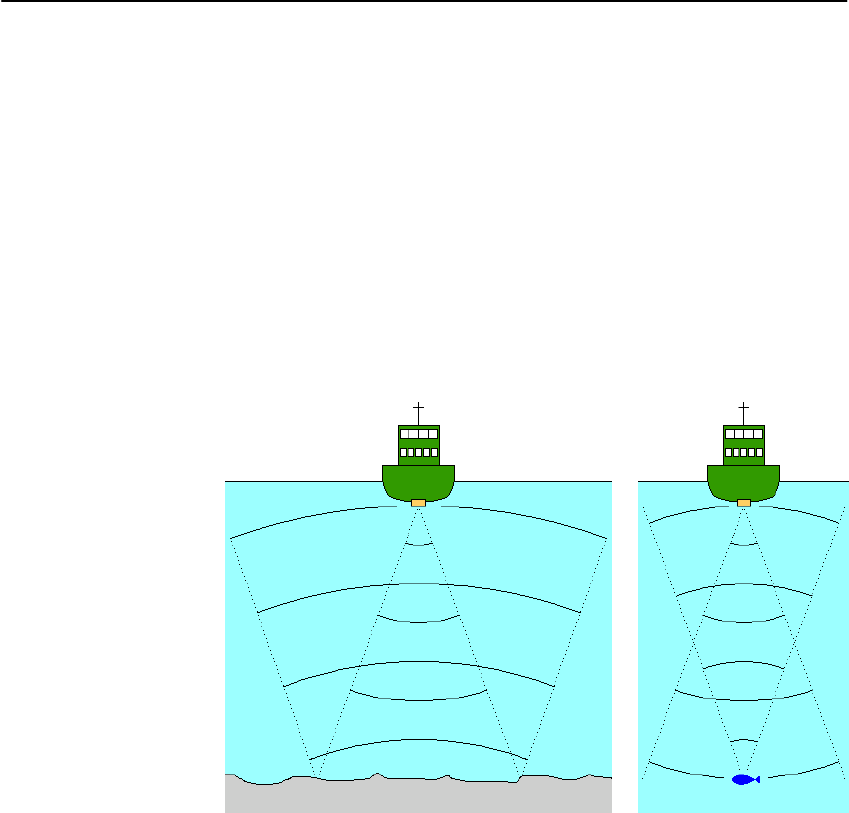
System description
5
857-164342 / Rev.C
Wave propagation
The velocity of sound wave propagation in the sea varies
slightly with temperature, salinity and pressure. The velocity
varies between 1440 and 1520 m/s in shallow sea water, while a
velocity around 1480 m/s can be expected at 1000 m depth. In
shallow fresh water the velocity is approximately 1430 m/s.
A good average value to be used in the Environment dialogue
box is 1470 m/s.
Figure 1 The
wave propagation
principles
The EQ60 transmits high energy sound wave pulses into the sea.
A flat bottom reflects the transmitted wave as if it were a mirror.
The propagating energy is spread over a larger and larger area as
it travels down to the bottom and up again. The energy is spread
over a four times larger area every time the travel distance
doubles.
A large school of fish reflects sound waves similarly. This type
of spreading is referred to as square-law or 20 log TVG (Time
Varying Gain) spreading.
The situation is slightly different when observing the echoes
from individual fish. The transmitted wave undergoes
square-law spreading when travelling from the surface and
down to the fish. The swim bladder of the fish scatters a small
fraction of the arriving energy in all directions. Travelling from
the fish and back towards the surface the scattered wave
undergoes another square-law spreading. The combined effect is
referred to as quad -law or 40 log TVG spreading.


















